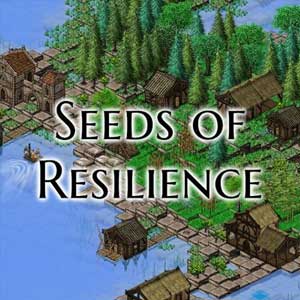- Seeds Of Resilience Game
- Seeds Of Resilience Crack Software
- Seeds Of Resilience Crack Minecraft
- Seeds Of Resilience Crack Filler
Throughout time, artists and ordinary citizens have created art to protest, critique, or resist the dominant culture. This art has taken many forms—often painting and sculpture, but also graffiti art, murals, performances, and music. Protest art also marked a shift in who created art—from the domain of artist to also include social activists and ordinary citizens with a message to convey. Activist art seeks to reach a wide audience, and for this reason generally is created and displayed outside of a museum or gallery setting.

One of the best-known early examples of protest art is Pablo Picasso’s painting Guernica. Often called modern art’s “most powerful anti-war statement,” Guernica was created for the Spanish Pavilion at the 1937 World’s Fair, and was Picasso’s response to the bombing of Guernica, a small town in the Basque region of Spain, by Germany at the request of the Spanish nationalist government. During this attack, 1600 civilians were killed or wounded. The mural (originally displayed near a monument to Nazi Germany) depicts the suffering of humans and animals, but Picasso refused to interpret the symbols for his viewers, stating,
Seeds Of Resilience Game
- Shipwrecked on a desert island Seeds of Resilience is a turn-based simulation. You have to manage a team of survivors and build a village starting from nothing.
- Green Crack is another California strain great for those trying to find their green thumb. A long-standing popular strain in the outdoor California scene, Green Crack is a fantastic choice for.
- Open “Seeds of Resilience.zip”, next run installer “Seeds of Resilience.exe” 2. Install the game 3. Copy files in folder Crack to folder in which you installed the game 4. Now you can play full version of the game and enjoy it!
Seeds Of Resilience Crack Software
/https%3A%2F%2Fspecials-images.forbesimg.com%2Fimageserve%2F5e6945cd7d6f2600068f3c18%2F0x0.jpg%3FcropX1%3D0%26cropX2%3D3200%26cropY1%3D93%26cropY2%3D1675)

Seeds Of Resilience Crack Minecraft
Buy Seeds of Resilience as a Steam Key. Build a new village from scratch Build a village on a deserted island, and prepare for merciless natural disasters! Learn to choose the right items, understand nature's patterns, use real medieval construction and craft techniques in this turn-based management game. In the natural world, resilience is visible in many forms: the lush meadows that arrive after a forest fire has blackened the land, the green plants that find a way to sprout in the cracks of city sidewalks, the tiny seeds of wildflowers which survive years of drought and then open up in vast fields of color.
It isn’t up to the painter to define the symbols. Otherwise it would be better if he wrote them out in so many words! The public who look at the picture must interpret the symbols as they understand them.
Seeds Of Resilience Crack Filler
This activity invites students to look at and interpret the symbols in artwork related to resilience. Print and post the works of art on the following pages in different places around the classroom, providing the included contextual information. Divide the students into small groups and have them discuss each piece of art and then rotate until they’ve seen them all. Have a short discussion as a class to debrief the experience.
- What stands out to you about this artwork?
- How does the artwork connect the past to today?
- How does this art reflect the theme of resilience?
- What message do you think the artist is trying to send?
- What images, symbols, and/or colors did the artist choose? Why?
- In what way(s) does this art show or suggest that challenges have been overcome?
- What are some of the historical, religious, or other cultural references in the art?
- Name some of the symbols or references in the art that you don’t understand. Who might those be for? Why include them?
- How does this art affect you? How might it impact others who see it?


- Which was your favorite piece of art? Why? What about this spoke to you?
- What do these pieces of art have in common?
- What historical references did you notice in these artworks? Why were these in there? What does this have to do with resilience?